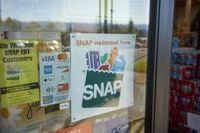Nearly 42 million Americans are bracing for a potentially devastating disruption to their food security as the federal government shutdown drags into its third week, threatening to halt Supplemental Nutrition Assistance Program (SNAP) benefits in November. The uncertainty is being felt acutely in Pennsylvania, where nearly 2 million residents depend on SNAP, but the crisis extends nationwide, impacting low- and no-income households from North Carolina to Minnesota and beyond. As lawmakers in Washington remain deadlocked, state agencies and recipients alike are left anxiously awaiting clarity on whether they will be able to afford groceries next month.
On October 10, 2025, the U.S. Department of Agriculture (USDA) sent a stark letter to all state SNAP directors, ordering them to "hold" on sending November benefit data to retailers. Sasha Gersten-Paal, SNAP program development director, warned, "If the current lapse in appropriations continues, there will be insufficient funds to pay full November SNAP benefits for approximately 42 million individuals across the Nation." The letter, cited by both USA TODAY and the Milwaukee Journal Sentinel, made it clear: unless Congress acts swiftly, the safety net that supports millions could unravel in a matter of weeks.
SNAP, known to many as "food stamps," is a lifeline for low-income families, seniors, and children, providing monthly benefits via Electronic Benefits Transfer (EBT) cards. In 2024, about 41.7 million Americans—roughly 12.3% of the U.S. population—relied on the program, according to the USDA. In Pennsylvania alone, more than $366 million in monthly SNAP payments are at risk. The state’s Department of Human Services (DHS) emphasized in an email, "The Commonwealth cannot backfill these costs so SNAP benefits are on hold until a federal budget is passed."
The situation is particularly dire in counties with the highest SNAP participation, such as Philadelphia (30.2%), Fayette (24.3%), and Cameron (21.8%), according to DHS data. For many residents in these areas, SNAP is not just a supplement—it’s the difference between feeding their families and going hungry.
The roots of the crisis lie in Congress’ failure to reach a funding deal for the 2026 fiscal year. The shutdown, which began on October 1, 2025, has now stretched into its 16th day, with Democrats and Republicans unable to break the impasse. According to USA TODAY, the dispute centers on whether to extend expiring Obamacare subsidies, with Democrats insisting on their inclusion in any budget agreement, while Republican lawmakers and President Donald Trump refuse to accept those terms.
The consequences of this political standoff are rippling through state governments. Health agencies in North Carolina, Wisconsin, and Minnesota have all issued warnings that SNAP benefits may not be available in November if the shutdown continues. North Carolina's Department of Health and Human Services confirmed that October benefits would be paid as usual but admitted it "does not currently have information on November." Similarly, Minnesota's Department of Children, Youth, and Families posted on its website that "if the federal government shutdown continues into November, there will not be enough funds to pay November Supplemental Nutrition Assistance Program (SNAP) benefits."
Ronald Ward, the acting associate administrator of SNAP, reiterated the gravity of the situation in an October 1 letter: "SNAP has funding available for benefits and operations through the month of October. However, if the current lapse in appropriations continues, there will be insufficient funds to pay full November SNAP benefits for approximately 42 million individuals across the Nation." Ward further explained, "Considering the operational issues and constraints that exist in automated systems, and in the interest of preserving maximum flexibility, we are forced to direct States to hold their November issuance files and delay transmission to State EBT vendors."
For recipients, the uncertainty is agonizing. The Food Action and Research Center warned in a blog post, "If USDA fails to instruct states to transmit the necessary electronic files on time, November SNAP benefits could be delayed or interrupted entirely. Each state operates on its own internal processing schedule to ensure the timely issuance of benefits. If a state misses its deadline to begin that process, delays are almost inevitable, leaving households without access to the food assistance they rely on."
While SNAP is considered a mandatory program—meaning those who qualify are legally entitled to benefits—the actual payments still depend on congressional appropriations. During short shutdowns, the USDA can often rely on existing funds to keep benefits flowing. But a prolonged shutdown, such as the one currently unfolding, risks exhausting those reserves. The USDA has contingency funds for administrative expenses and participant benefits, but, as USA TODAY notes, it remains unclear how much is left in that reserve.
History offers little comfort. During the longest government shutdown in U.S. history, which lasted 35 days from December 2018 into January 2019, SNAP payments were never frozen outright. Instead, February 2019 benefits were issued early in January, creating a long gap in payments for some recipients. Congress eventually passed emergency funding to keep payments flowing in March. This year, however, the USDA’s directive to states is more severe: hold off entirely on processing November benefits until further notice.
The crisis is compounded by legal and political battles on other fronts. The USDA is currently fighting in court to obtain personal data of SNAP recipients from several states, including Pennsylvania. In response to the USDA’s earlier attempt to freeze payments to states that refused to provide this data, Pennsylvania Governor Josh Shapiro joined a lawsuit challenging the pause. On October 15, a federal judge ruled the USDA must continue funding SNAP until the lawsuit is resolved, providing a temporary reprieve but no long-term solution.
Looking further ahead, the future of SNAP funding appears even more precarious. The massive tax cuts and spending bill signed by President Trump earlier in 2025 is projected by the Congressional Budget Office to slash SNAP funding by up to 20% by 2034. Such a reduction would have profound implications for food security across the nation, especially if the current crisis is any indication of the program’s vulnerability to political gridlock.
As the days tick by with no resolution in sight, the stakes could not be higher. Millions of Americans are left wondering how they will put food on the table next month, while state agencies scramble to prepare for a scenario they hope never comes to pass. The fate of SNAP—and the families who depend on it—hangs in the balance, awaiting action from a divided Congress.
For now, all eyes are on Washington. The clock is ticking, and for those who rely on SNAP, every day without a deal brings new uncertainty and anxiety.




